8 Best Things to Do in Gjirokaster, Albania
Ottoman-era houses, steep and narrow streets, an open-air bazaar, a huge castle perched on top of a hill overlooking the Drino Valley and the mountains. Welcome to Gjirokaster, Albania’s ‘Stone City’, which gets its name as a result of its building style.
Sometimes people compare it to another UNESCO site, Berat ‘the city of a thousand windows’. However, the two cities are quite different in reality and you definitely should add a visit to both when planning your Albania itinerary. In this blog post we will give you an insight into all the best things to do in Gjirokaster, how to get there and how long to stay for.
If you’d like to see what we got up to in Gjirokaster, then make sure to watch our dedicated south of Albania video on our YouTube channel. For more Albania videos, check out our Albania Series.
Disclosure: This post may contain affiliate links, which means we may receive a small commission if you click a link and purchase something. Clicking these links won’t cost you anything, but it will help us to keep this site up and running! Learn more about our affiliate policy.
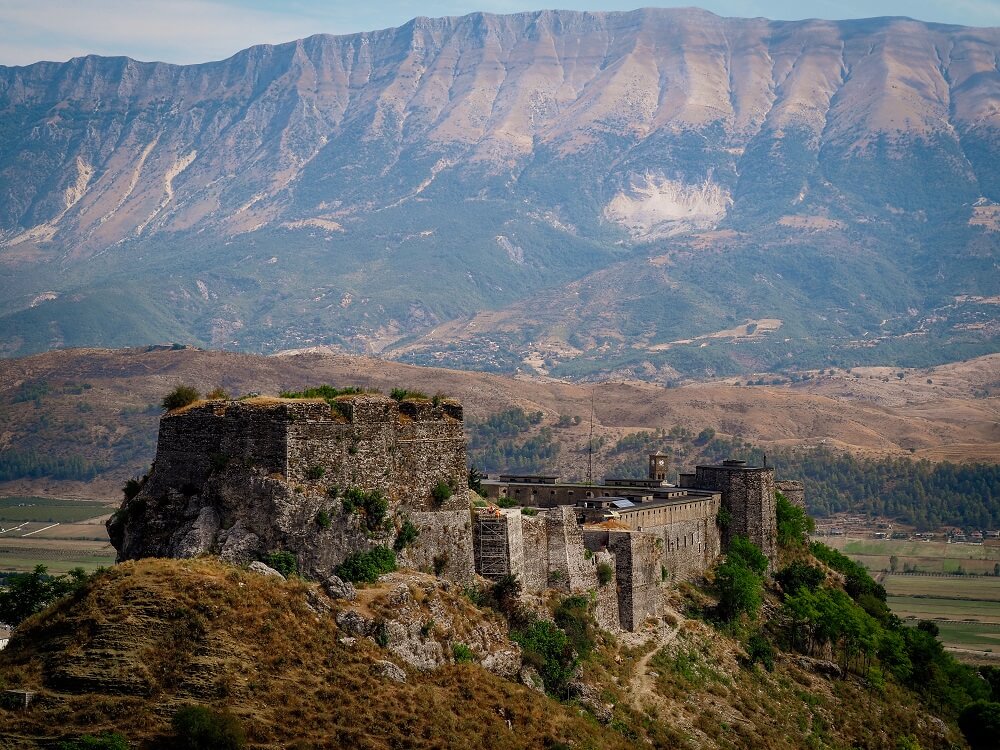
Introducing Gjirokaster, Albania
Located in the south of Albania is the city of Gjirokaster. The early history of the city is a bit unknown. The first mention of it was in 1336 and referred to it as Argyrokastro. In 1417 it came under the control of the Ottoman Empire. Tax records from around that time show that the city had around 163 dwellings. In the 16th and 17th centuries Gjirokaster became a sanjak, which was an administrative unit of the Ottoman Empire. Records from 1583 indicate that the city expanded and had around 434 buildings. Apparently, by the 17th century, Gjirokaster was almost the size it is today.
In 1811 the city was under the control of Ali Pasha Tepelene who expanded the fortress and also built an aqueduct. In the 19th century the efforts to promote Albanian national identity resulted in the opening of Gjirokaster’s first Albanian language school. The city became independent shortly after the declaration of Independence of Albania in 1912. In 1939, the city fell under Italian occupation. However, it stayed a centre of resistance to the Italian, and later the German, occupations.
During the years under communism, Gjirokaster underwent large scale industrialisation. In 1961, it was declared a Museum City by the communist regime to conserve the cultural heritage. When the communist regime fell, the city’s economy declined rapidly. It resulted in many people migrating to the capital Tirana or abroad.
Did you know? – Gjirokaster is known to be the birthplace of Enver Hoxha, Albania’s communist dictator. It is also where the award-winning Albanian writer Ismail Kadare was born.
During the civil war in 1997, the castle, many of the museums and most of the historical places were vandalised. To save these buildings, the historic centre became a UNESCO World Heritage Site in 2005.
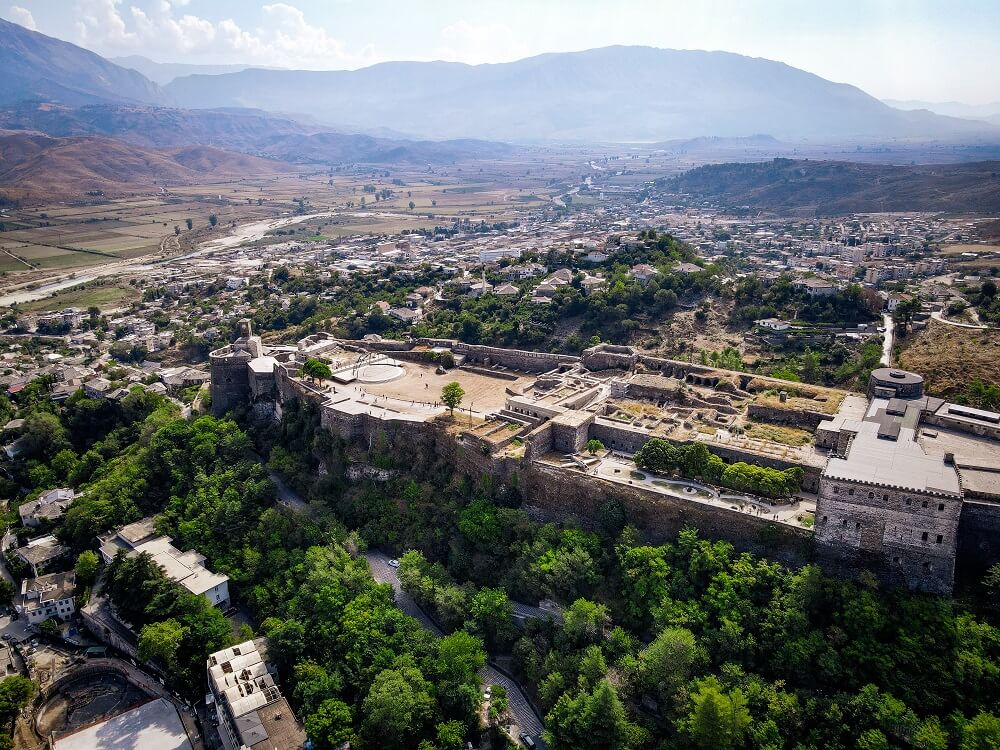
How to Get to Gjirokaster, Albania
By Car
If you’ve hired a car to travel around Albania, then depending on where you’re coming from here are a few ways to reach Gjirokaster:
- From Tirana: Gjirokaster is located over 230km to the south of Tirana and you can reach it in about 3.5 hours. You can follow the SH2 towards Durres and then the SH4 all the way to Gjirokaster.
- From Saranda: Located about 55km to the north-east of Saranda, you can reach Gjirokaster in about an hour from there. You’ll have to follow the SH99 out of the city and then Google Maps suggests to join the SH78 before taking the Rruga Ura e Kardhiqit – Sarandë. Then just turn onto the SH4 to reach the city. Now if you’re planning on visiting the Blue Eye you can just follow the SH99, stop at the Blue Eye, then join the SH78 before turning north on the SH4 to Gjirokaster.
- From Berat: Berat is a popular stop between Tirana and Gjirokaster. If you’re coming from Berat, then you can get to Gjirokaster in about 2.5 hours. The quickest route according to Google Maps is to get to the SH4 via the SH72 then the SH73.
By Bus
You can also reach Gjirokaster relatively easily from any major city or town in Albania by bus:
- From Saranda: There are regular buses from Saranda to Gjirokaster leaving every hour from 5:30 AM until 3 PM. You can check the timetables here. Tickets cost approximately 400 LEK (3.50 EUR), and the journey takes about an hour depending on traffic.
- From Berat: There are only about two or three buses departing from Berat’s main bus terminal. The local bus to the bus stop is 30 LEK (0.25 EUR). You can check the bus timetables here. Tickets cost 1000 LEK, and the journey takes between 3 – 3.5 hours.
- From Tirana: There are around 10 or 11 daily bus services between Tirana and Gjirokaster starting from 5am. You an check the timetables here. The bus leaves from the Regional Bus Terminal North and South in Tirana. Taxi’s to the bus station in Tirana can cost around 1000 LEK (9 EUR). Journey time is 4–4.5 hours, and tickets cost 1300 LEK (12 EUR).
In Gjirokaster you’ll arrive at the Regional Bus Terminal. From there, depending on where you’re staying, you can walk, catch another bus or a taxi to the Old Town. A taxi from the new to the old part of the city is around 400-500 LEK (3.50 – 4.50 EUR).
How Long Do You Need in Gjirokaster
Due to its close proximity to Saranda many people only visit Gjirokaster on a quick day trip. If you’re short on time then you can definitely see the highlights of the city in a day. However, we highly recommend staying at least one night.
For reference we spent 2 nights in the city and managed to see and do everything we wanted. Although we definitely could’ve easily spent an extra night there for a more relaxing time or to take a day trip to the Blue Eye or other small villages surrounding the city.
In terms of best places to stay, we recommend staying closer to the old town especially if you’re short on time.

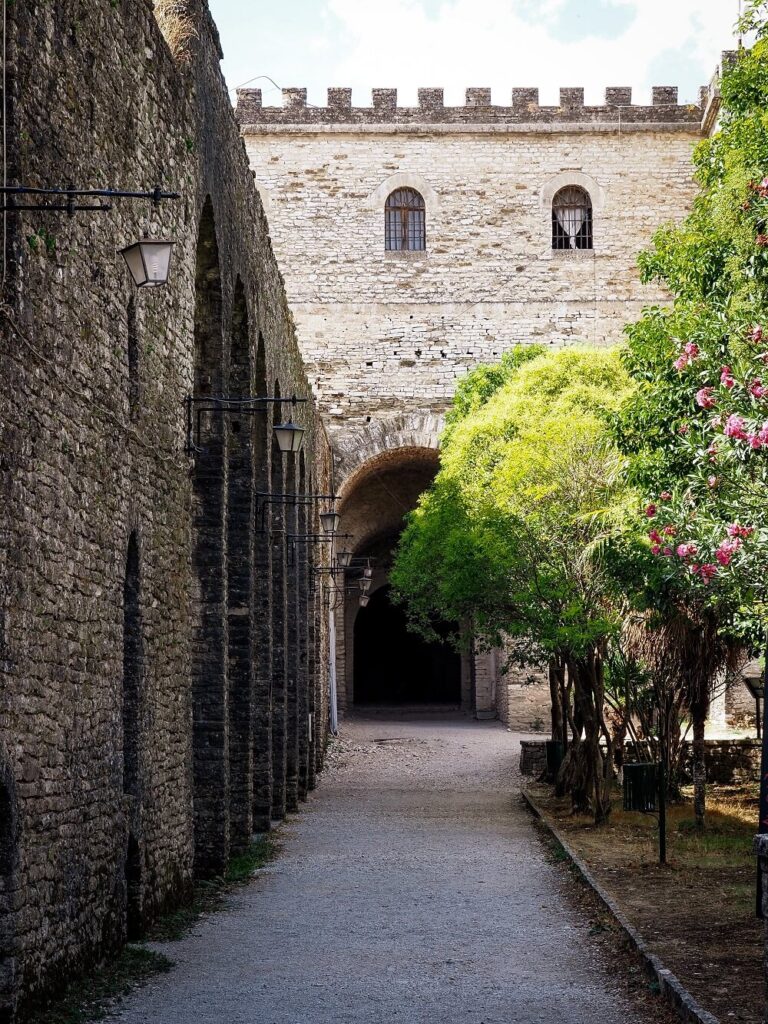
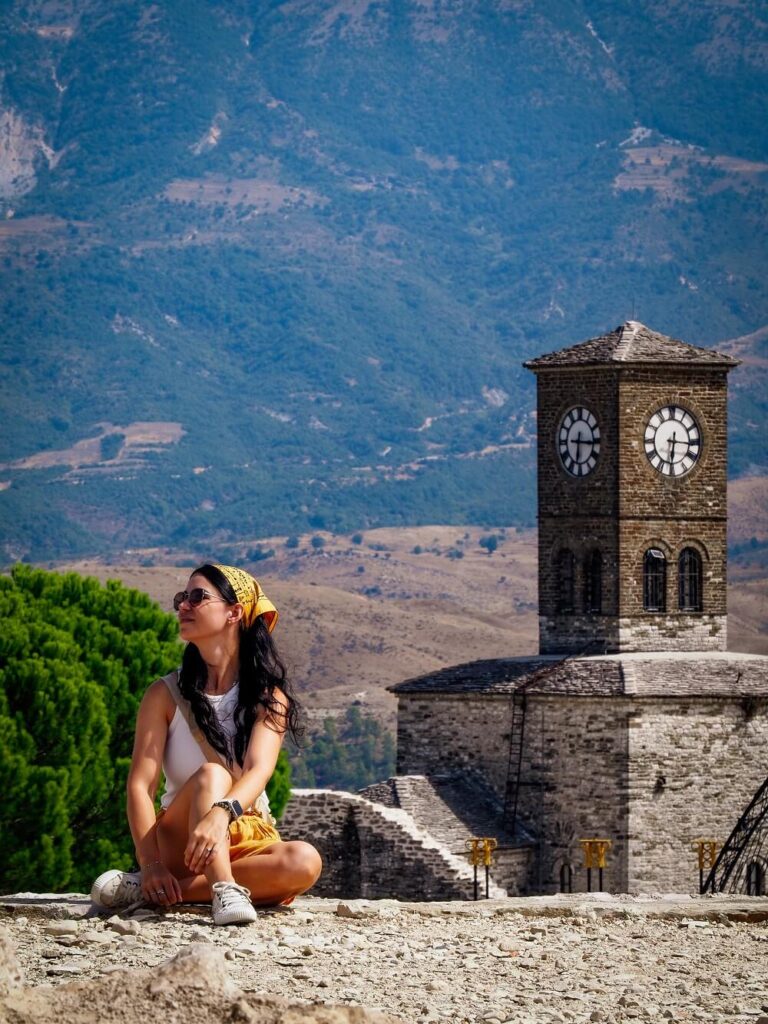
8 Best Things to Do in Gjirokaster, Albania
1. Walk Up to Gjirokaster Castle (Kalaja E Gjirokasres)
Just like in many other small cities and towns in Albania, the number one landmark in Gjirokaster is the Gjirokaster Castle. Sitting on top of the hill, it’s actually the second largest castle in the Balkans.
Although the exact construction date is unknown, the citadel is thought to have been inhabited since the 4th or 5th century. According to historians, the fortification was built in the 12th century by rich families to provide them with protection against the war. Later, during Ali Pasha and King Zog’s rule, the fortress underwent some renovations and expansions. A clock tower, stables, fountains and a church were added to the internal parts of the castle. Under King Zog, some parts were converted into prisons for politicians.
Today, the castle operates as a museum and heritage site. There are a few features you can see as you wander around such as the artillery gallery, the Clock Tower, the American Airplane and the festival stage. From the castle you can also enjoy some stunning views of Gjirokaster’s Old Town, the Drino Valley and the mountain ranges surrounding it.
Entry fee to the castle is 400LEK (3.50 EUR) per person. It is open every day between 9 AM and 7 PM.
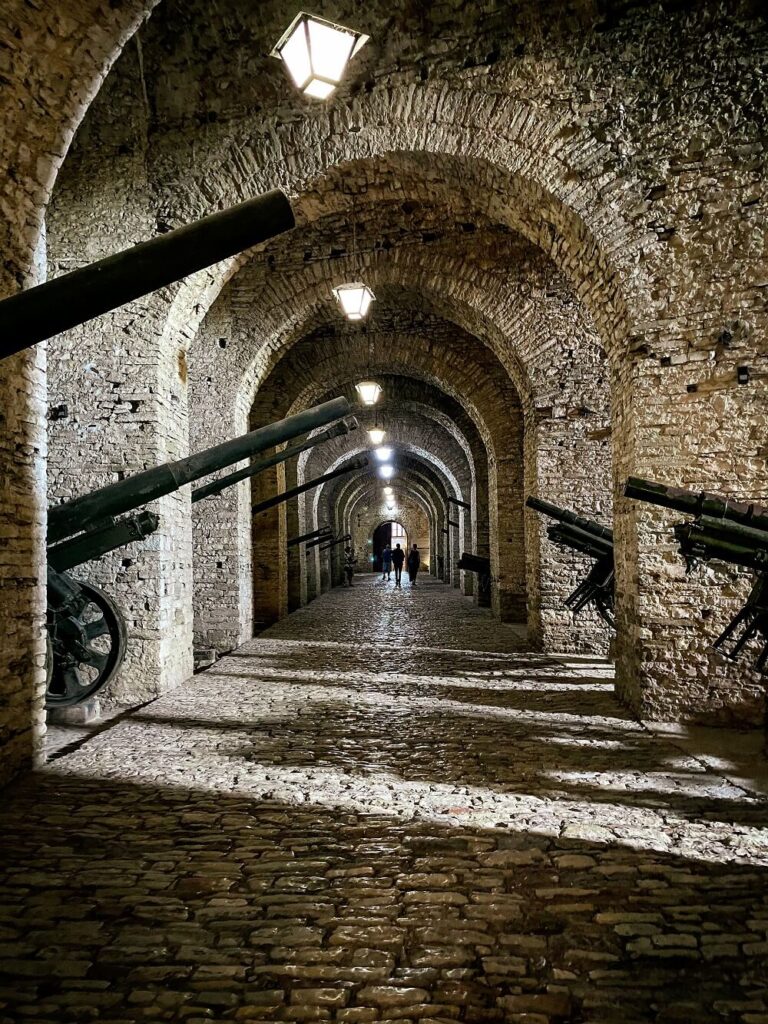
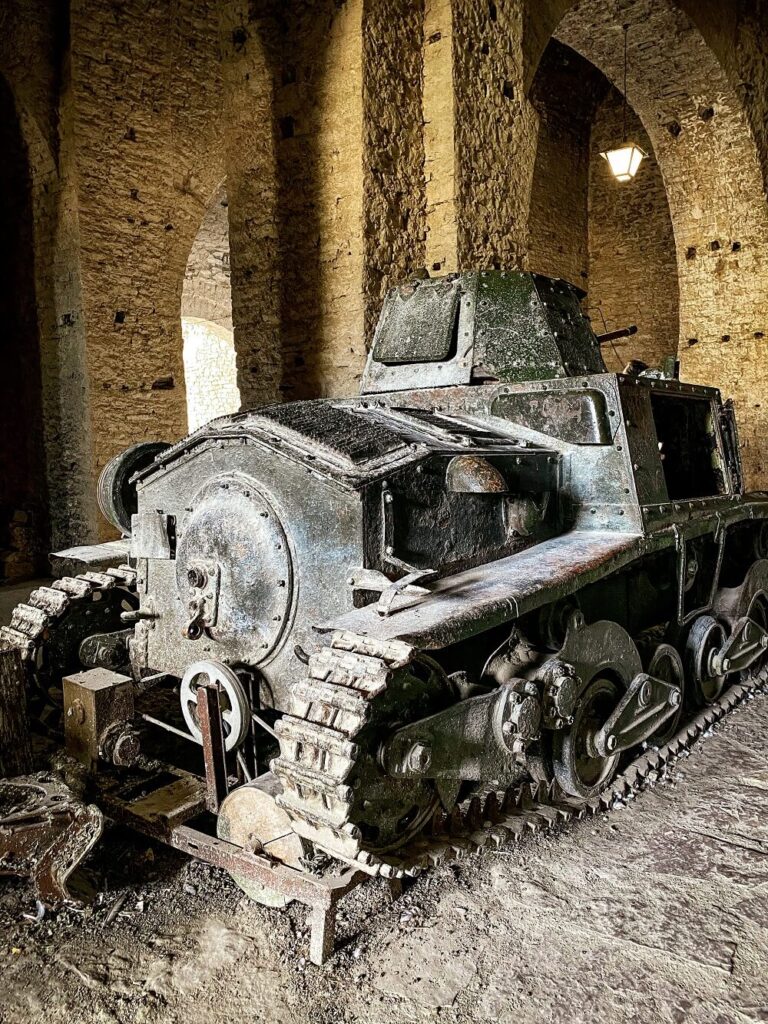
2. Visit the Gjirokaster Museum
Within the castle walls, you can also visit Gjirokaster Museum. It displays historical and archaeological objects as well as sharing the history of the city and the surrounding area. The museum has English signs too, so you can read about how Gjirokaster got its name ‘the Stone City’, and there is also interesting information on rulers such as Ali Pasha and Enver Hoxha.
The entrance fee to the museum is 300 LEK (2.70 EUR) which you have to pay in addition to the castle entrance.
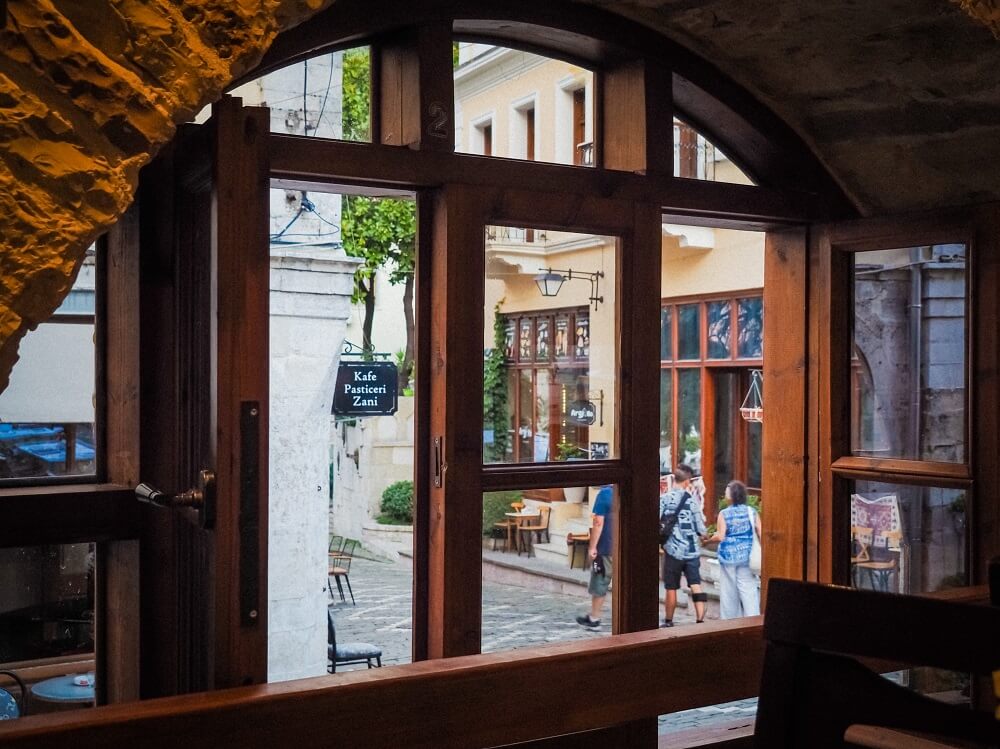

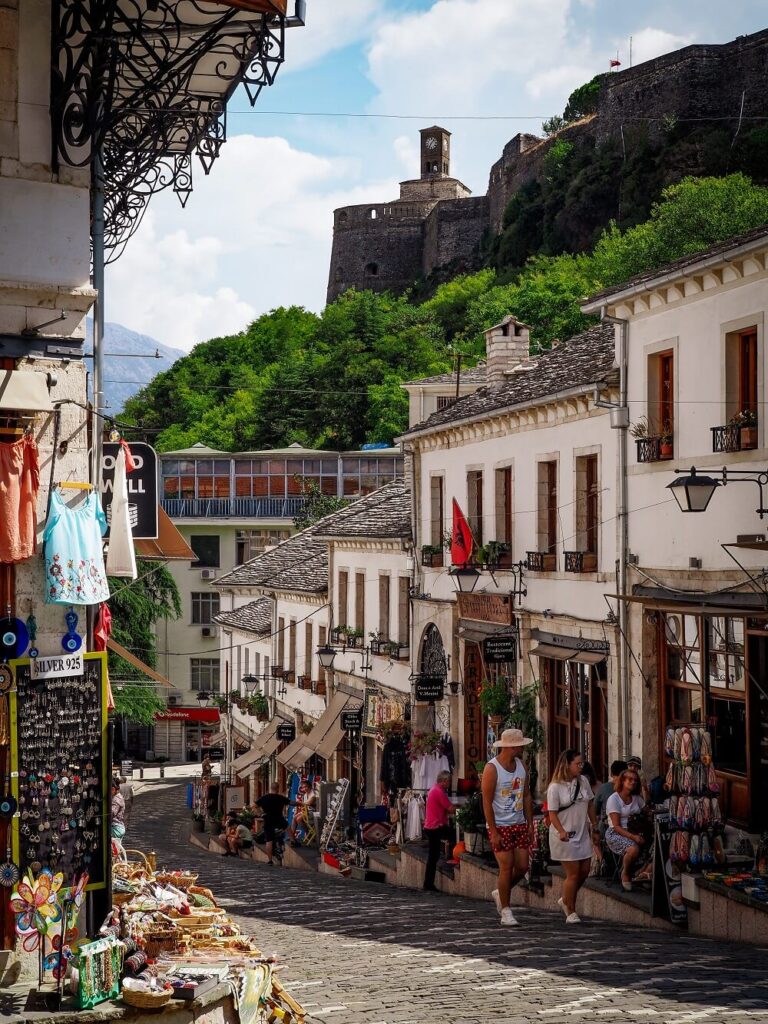
3. Wander Around Gjirokaster Bazaar
We absolutely love visiting local markets, so it was amazing to see that Gjirokaster’s Old Town is basically a huge Ottoman-style Bazaar. The bazaar, or ‘Qafa e Pazarit’, was originally built in the 17th century.
As you walk around, you’ll notice that the buildings are pretty much identical in this area. This is because the bazaar area had to be completely rebuilt after a devastating fire at the end of the 19th century.
Although you’ll see a ton of modern souvenirs such as t-shirts, keychains, magnets and so on, you can also see just as many handicrafts, curtains, carpets and ceramics. Apparently, there are still a few artisans who continue to work in the old way and pass down their knowledge to the next generation. We probably would’ve bought a lot of souvenirs if we weren’t headed on a 5-week long journey around Türkiye.
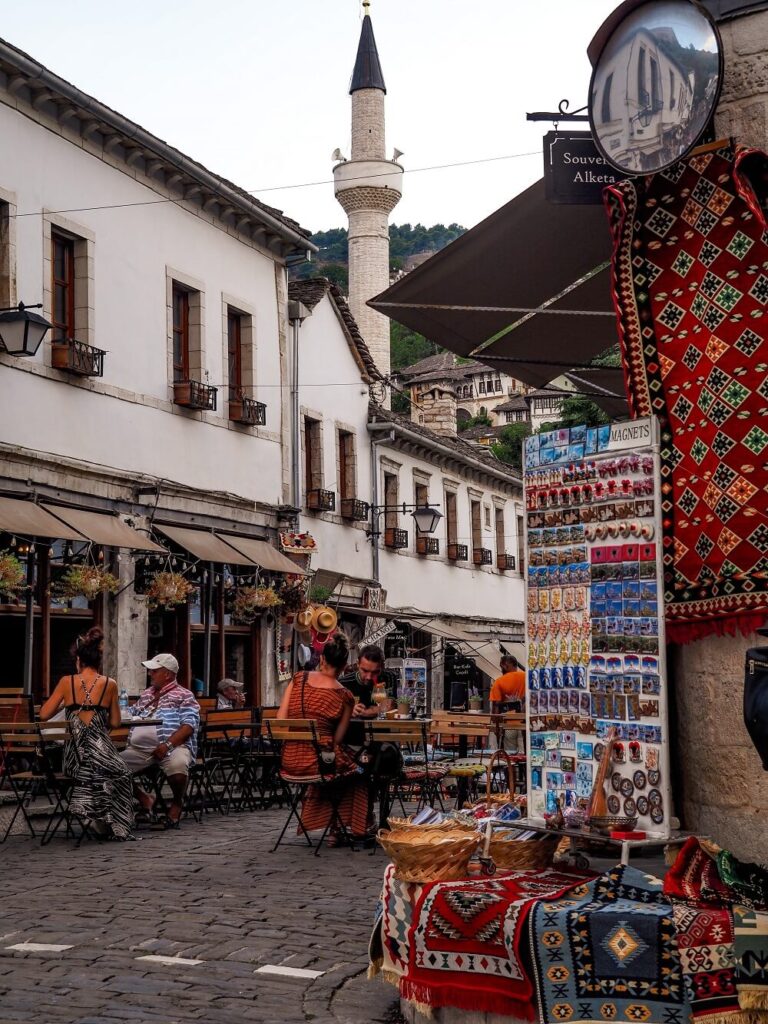
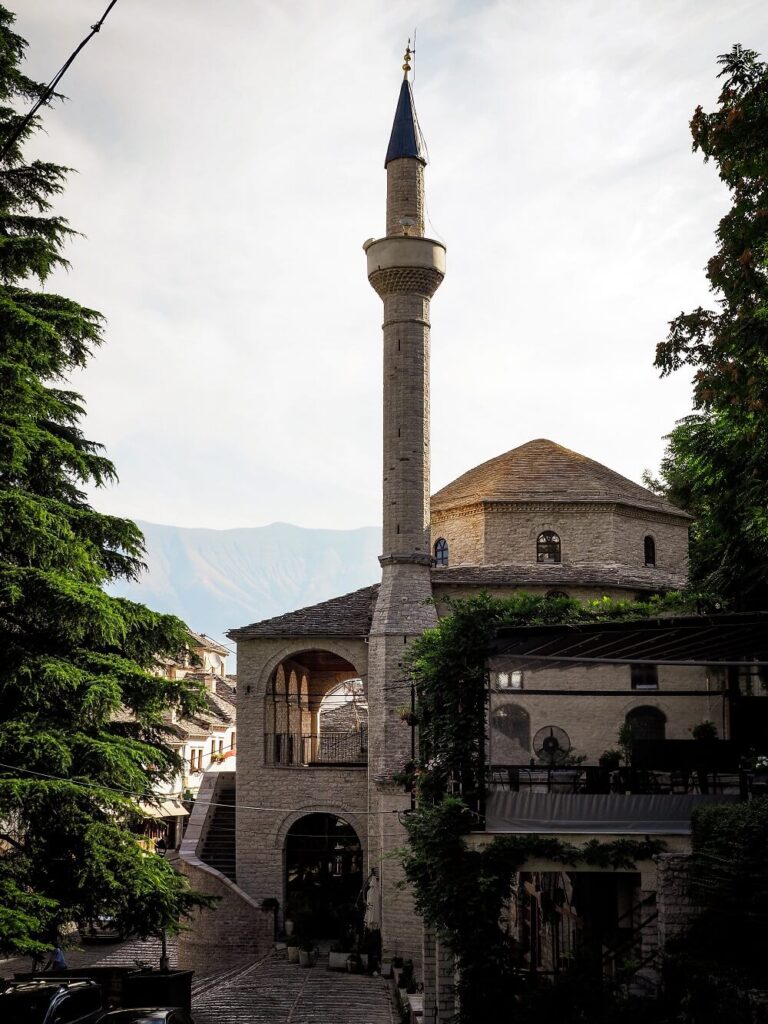
4. Check Out the Bazaar Mosque
Whilst you’re exploring the bazaar, make sure to stop at the Bazaar Mosque, located just around the corner. It was built in the 17th century and there were about 15 mosques in Gjirokaster during the Ottoman period. Around 13 survived until the communist era when the communist regime outlawed religion and destroyed most religious buildings.
Luckily, the Bazaar Mosque was spared due to its status as a cultural monument. During that time it was actually operating as a training hall for circus acrobats due to the mosque’s high ceiling.
5. Visit the Cold War Tunnel
Underneath Gjirokaster Castle and Gjirokaster Old Town is an underground tunnel and bunker complex. Like many bunkers across Albania, this one was also built under the communist dictator Enver Hoxha.
The tunnel is about 800m long and has nearly 60 rooms including rooms for government ministries, party elites and the local government. There’s also a kitchen, power generator and basically everything needed in the potential event of a nuclear attack. Compared to Bunk’Arts 1 and 2 in Tirana, the Cold War Tunnel is definitely less informative. However, what makes it a bit more interesting is that it’s pretty much in its original state.
Entry fee is 200 LEK (1.80 EUR) and the tour lasts about 20 minutes.
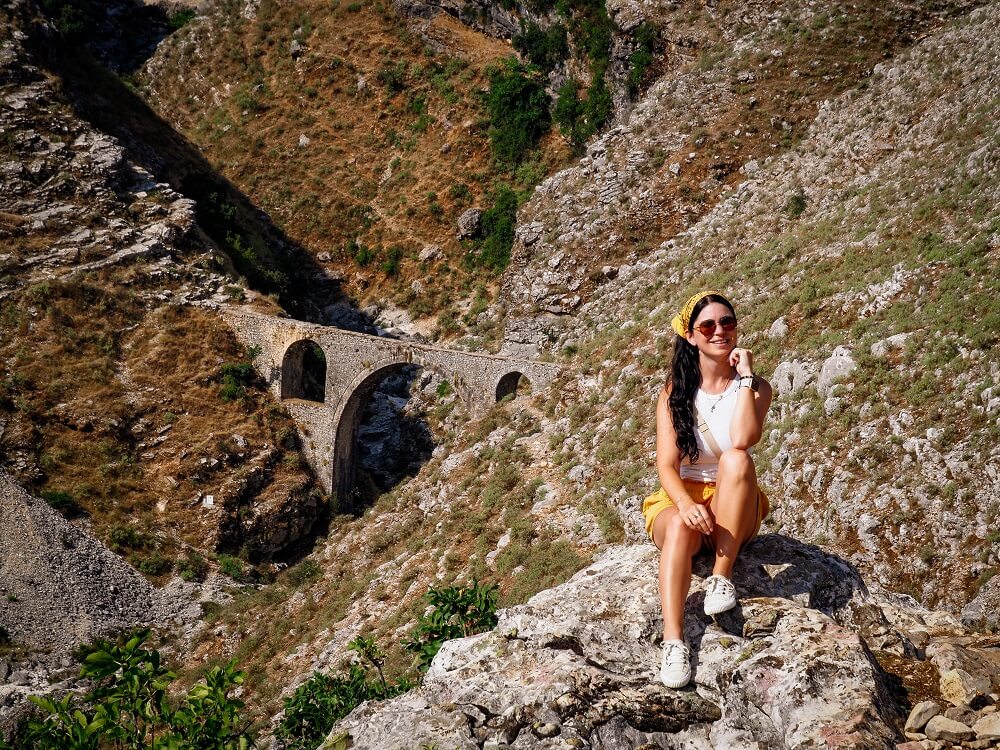
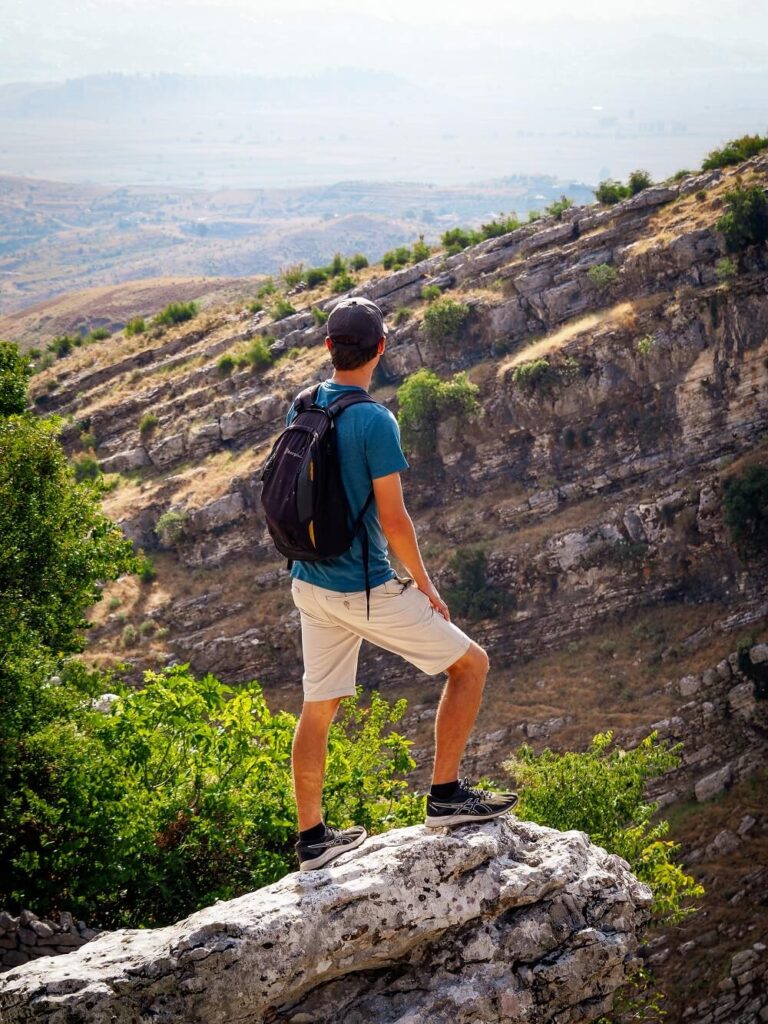
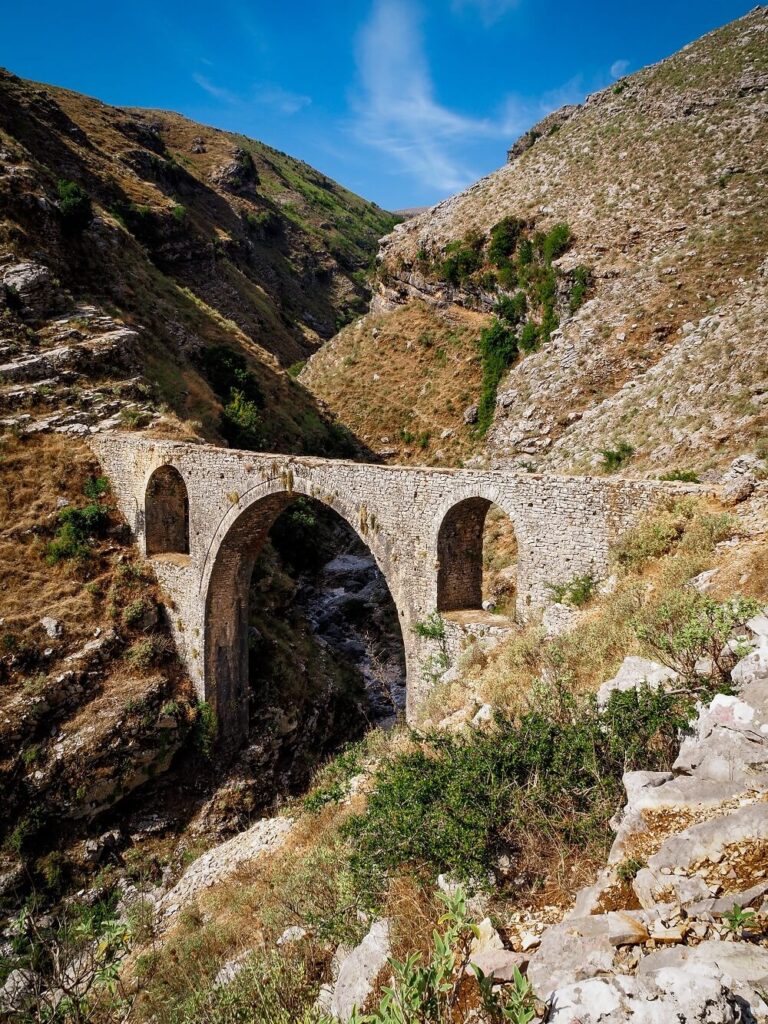
6. Hike to Ali Pasha’s Bridge
Possibly the second best thing to do in Gjirokaster, apart from visiting the castle, is a hike to Ali Pasha’s Bridge. Connecting the narrow gorge just outside the city, the structure couldn’t sit in a more stunning location. Once you leave the bustling Old Town behind there’s basically nothing apart from beautiful landscapes and a few shepherds herding their sheep.
In 1811, Gjirokaster was under the rule of Ali Pasha of Tepelenë. He expanded the fortress and also constructed a 12-km aqueduct, which brought drinking water from Sopot Mountain. Most of the aqueduct had been completely demolished by 1932, and only this small section remained known as Ali Pasha’s Bridge.
You can easily reach the ‘bridge’ in about 30 minutes by following this route from the Old Town. Once you’re closer to the edge of the city, there will be signs pointing to the ‘bridge’, so you can’t really get lost. We recommend three things before you set off. First, if you’re visiting in the warmer months, go earlier or later in the day when it’s cooler. Second, wear comfortable shoes as the path can be uneven and rocky once you leave the city. Last but not least, make sure to have some water on you to stay hydrated.
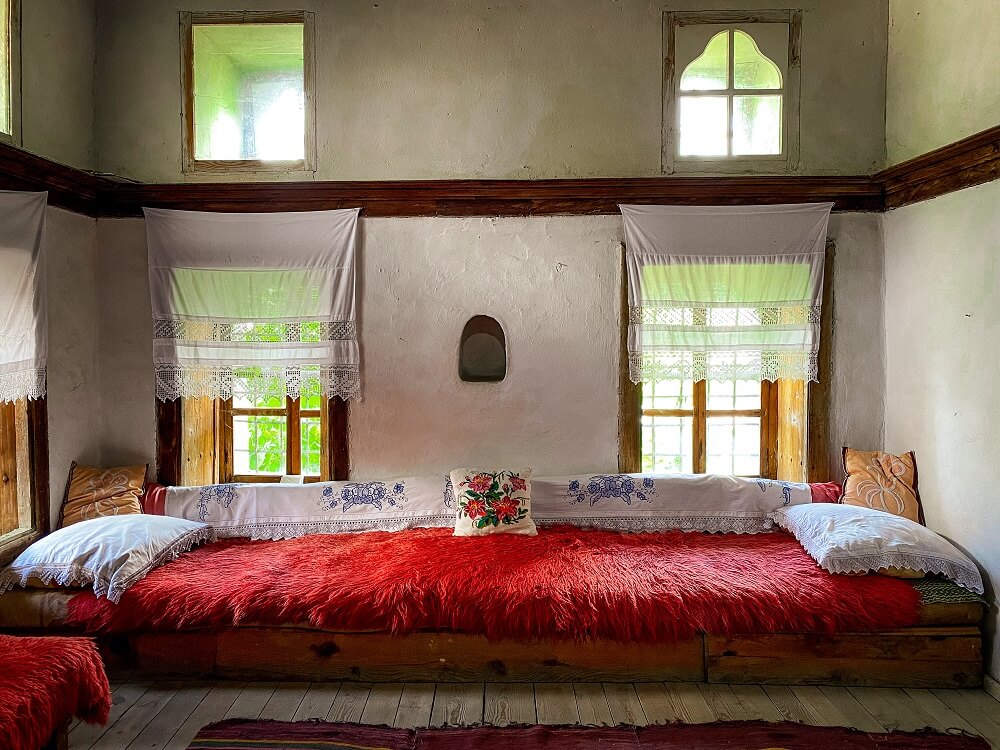
7. Take a Tour of a Traditional House
Taking a guided tour around one of the most beautiful traditional houses should definitely be on your list of things to do in Gjirokaster. The guides are normally family members and they have a very deep knowledge on the history of the houses. You’re guaranteed to learn something interesting, shocking or funny in every single room.
Zekate House
The most impressive building you can visit in Gjirokastër is the three-story Zekate House. This typical tower-house was built in the 19th century and has twin towers and a double-arched façade. Apparently, the house was a gift to Ali Pasha’s trusted man, Beqir Zeko.
During your tour you’ll see the storage rooms, the kitchen and a cistern on the ground floor. The first and second floors contain rooms for the family and a large reception room. The main room is decorated in the typical Ottoman style and has a beautiful fireplace, wood carved ceiling and frescoes.
The tour costs around 200LEK (1.80 EUR) per person.
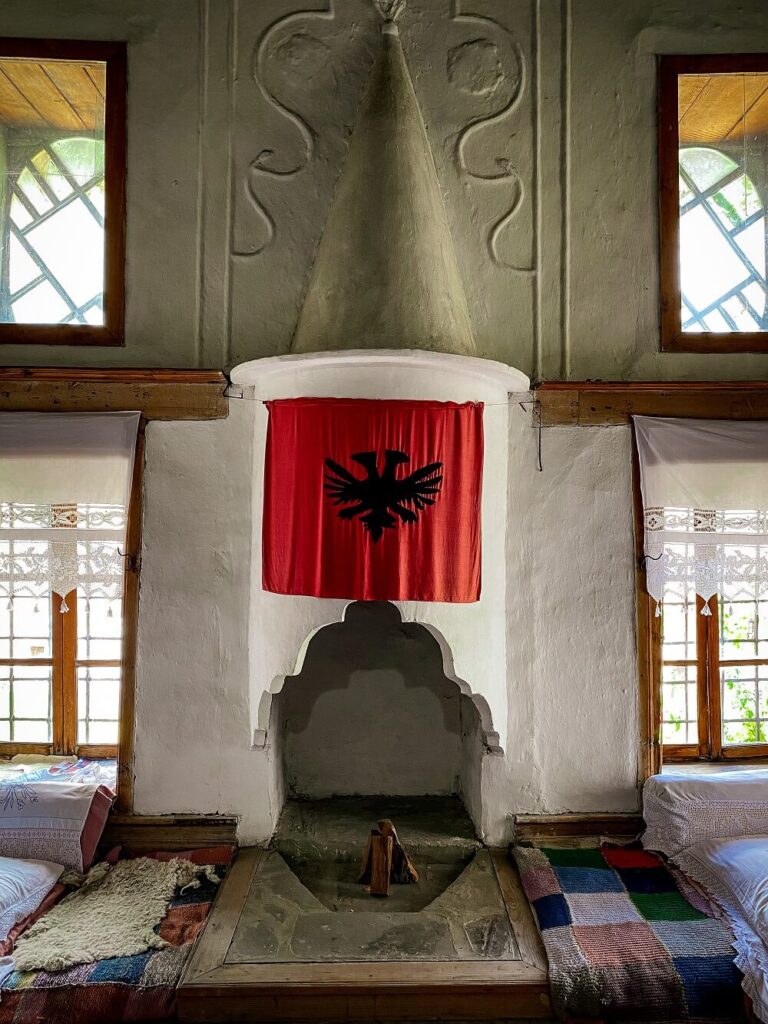
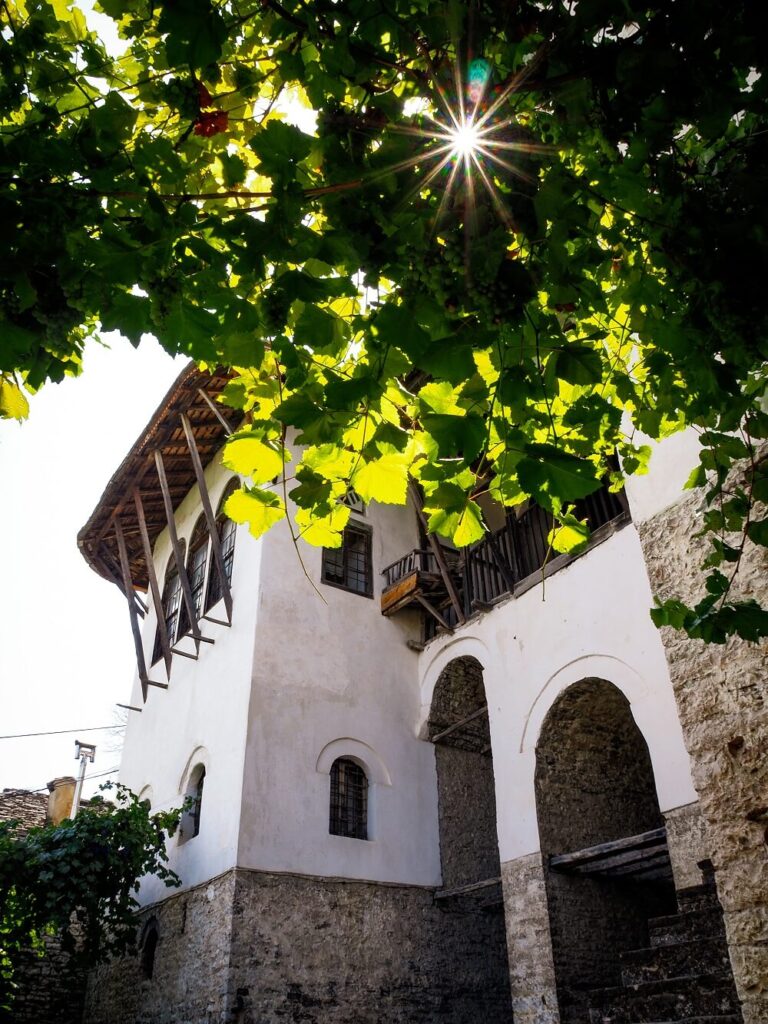
Skenduli House
You can also visit the beautiful Skenduli House located between Gjirokaster Castle and the Ethnographic Museum. Similar to Zekate house, it’s also a traditional Ottoman house in Gjirokaster.
This house was built around the 1700s, however it had some restoration done in 1827. Apparently, the family who owned the home was one of the wealthiest in southern Albania at that time. The house, which has 12 rooms, over 60 windows, 40 doors and 9 fireplaces definitely indicates the wealth of the owners.
A descendant of the family will take you on a tour and will tell you some of the most interesting stories about the family and traditions. Without spoiling too much, here’s one interesting fact that we learnt on our tour. During the communist regime, the family had to leave their home and it was used as the Ethnographic Museum before they could return later.
The tour costs around 200LEK (1.80 EUR) per person.

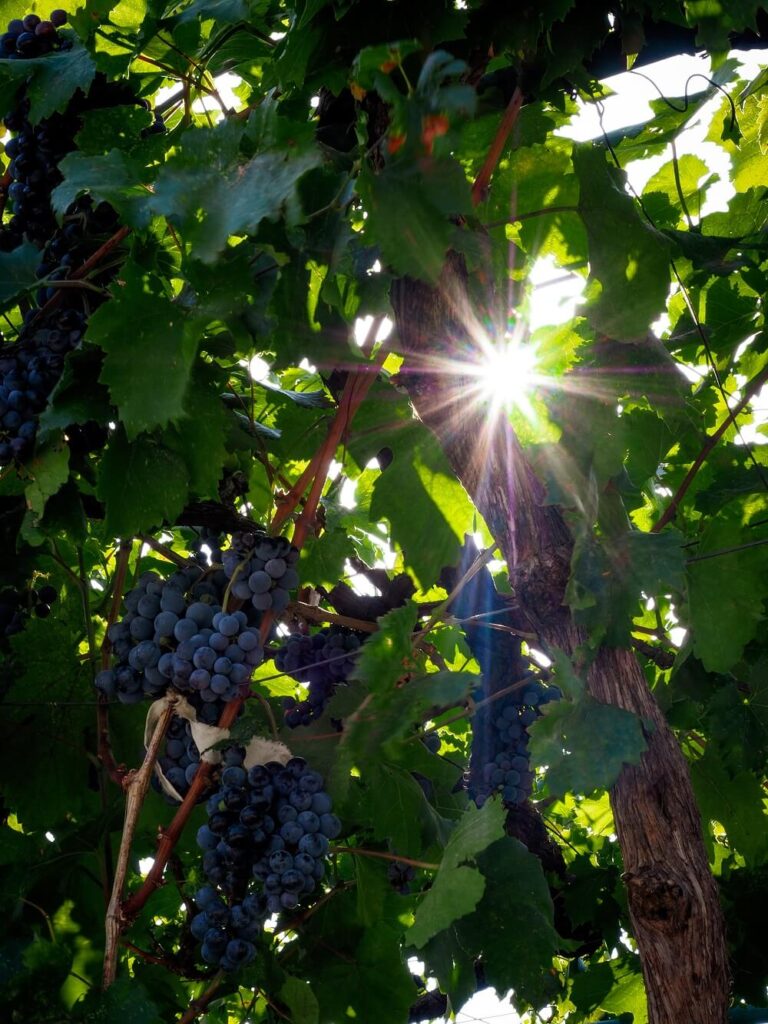
8. Visit the Ethnographic Museum
Speaking of the Ethnographic Museum, after touring some traditional homes, why not pay a visit to the current one just next to Skenduli House.
Did you know? As mentioned at the start, Enver Hoxha, Albania’s communist dictator, was born in Gjirokaster. Whilst the original house was destroyed in a fire, the Ethnographic Museum is actually located where his former house used to be. This new building was built more like a traditional house in Gjirokaster rather than a replica of Enver Hoxha’s home.
The museum houses a great collection of local arts and crafts and there’s nothing related to Enver Hoxha in there. All the rooms and objects within the museum reflect the traditional interior of a 19th century home in Gjirokaster.
Entry fee to the museum is 500 LEK (4.40 EUR) per person. It is open every day from 9 AM until 5 PM.
Check out our other Albania guides:
- 2 Week Albania Itinerary: Best Places to Visit in Albania
- Albania Travel Tips – All You Need to Know Before Your Visit
- Best Things to Do in Tirana, Albania
- 5 Things to Do in Himare, Albania
- 9 Best Things to Do in Berat, Albania
- 8 Things to Do in Theth, Albania
- Valbona to Theth Hike – A Guide to Hiking the Valbona Pass in Albania
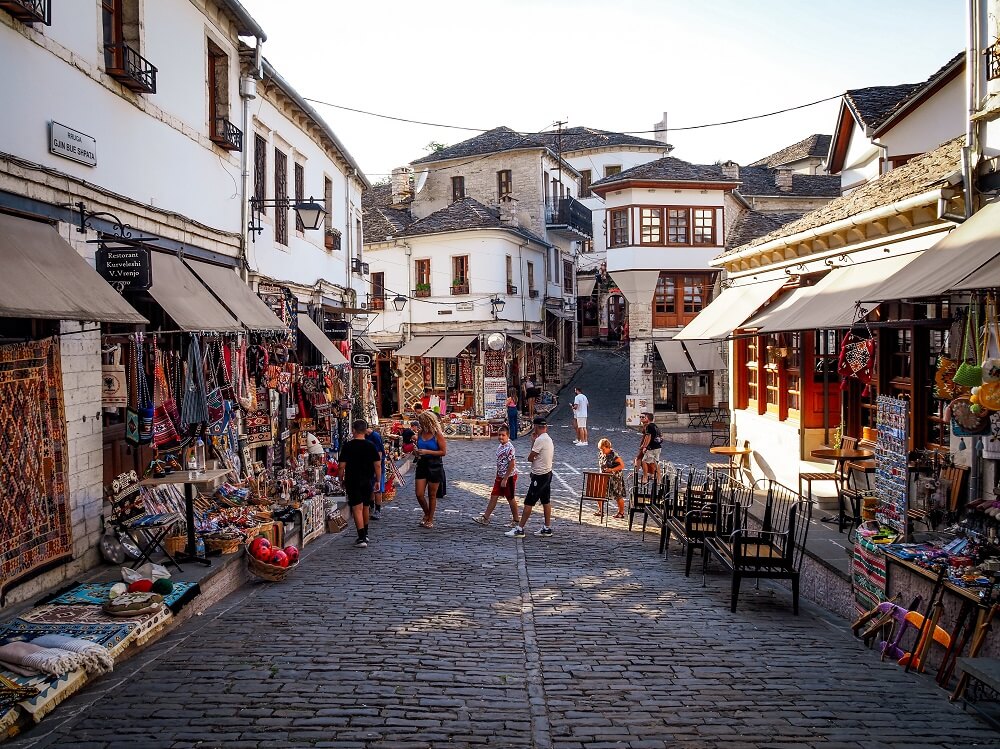
Final Thoughts on Things to do in Gjirokaster
Gjirokaster was a fantastic stop on our Albania itinerary. Whilst there are some similarities between Gjirokaster and Berat, in reality the two cities couldn’t be more different. From an outdoors perspective, we absolutely loved our short hike to Ali Pasha’s Bridge. Being pretty much alone with only a few shepherds just on the outskirts of the city surrounded by raw nature was a great feeling. Of course, having a tour led by a family member of one of the traditional houses in Gjirokaster was also a very educational experience. Lastly, let’s not forget about the insane views we could enjoy from the castle.
Have you ever been to Gjirokaster before? If so how did you like the town? If not, would you add Gjirokaster to your Albania itinerary? Let me know in the comments below.
Now, let your adventure begin,

Our Top Travel Resources
Accommodation: For hotels we always use Booking.com and Hostelworld for hostels. We also book longer stays on Airbnb or Vrbo.
Flights: To find the best flight prices we always check Skyscanner, Google Flights or WayAway. Then we also check the airlines’ websites too for comparison.
Car Rentals: We use Discover Cars when we want to rent a car as it compares local, national and international companies.
Activities: If we book organised tours we always check either GetYourGuide or Viator.
Foreign Currency: Whenever we can we prefer to pay in local currency and for that we always use our Wise card. We can easily withdraw money from the ATM or pay by card at most shops and restaurants.
Travel Insurance: We never go anywhere without travel insurance. You never know what will happen on your trip, so good travel insurance like SafetyWing can protect you in case of injury, illness, theft and cancellations.
eSIM and VPN: To get data abroad we use Airalo which is an app that allows you to download a prepaid eSIM to your phone in over 190 countries. Make sure to have a VPN to avoid hackers accessing your personal data when using public WIFI. We use Surfshark which is the only VPN that offers one account on unlimited devices.
Remember…It all starts with a Pin…
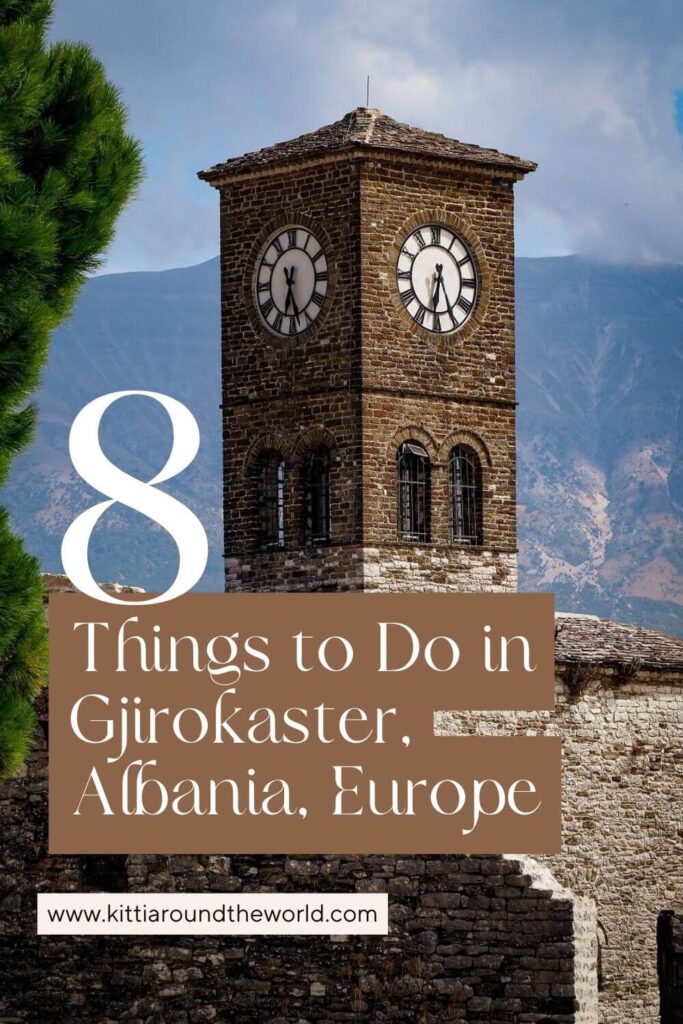
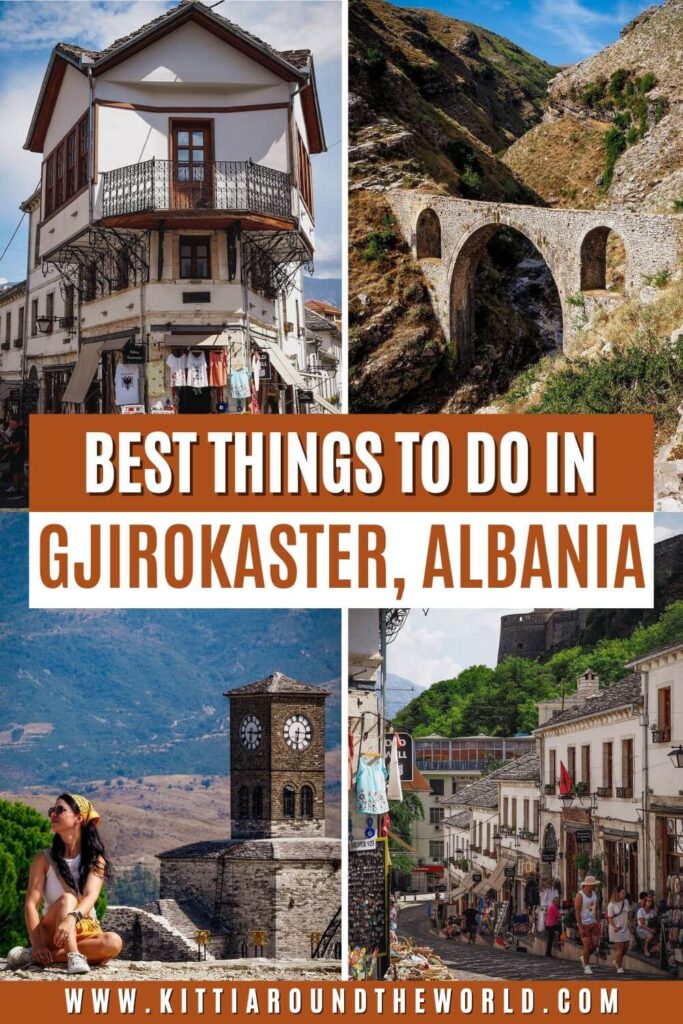

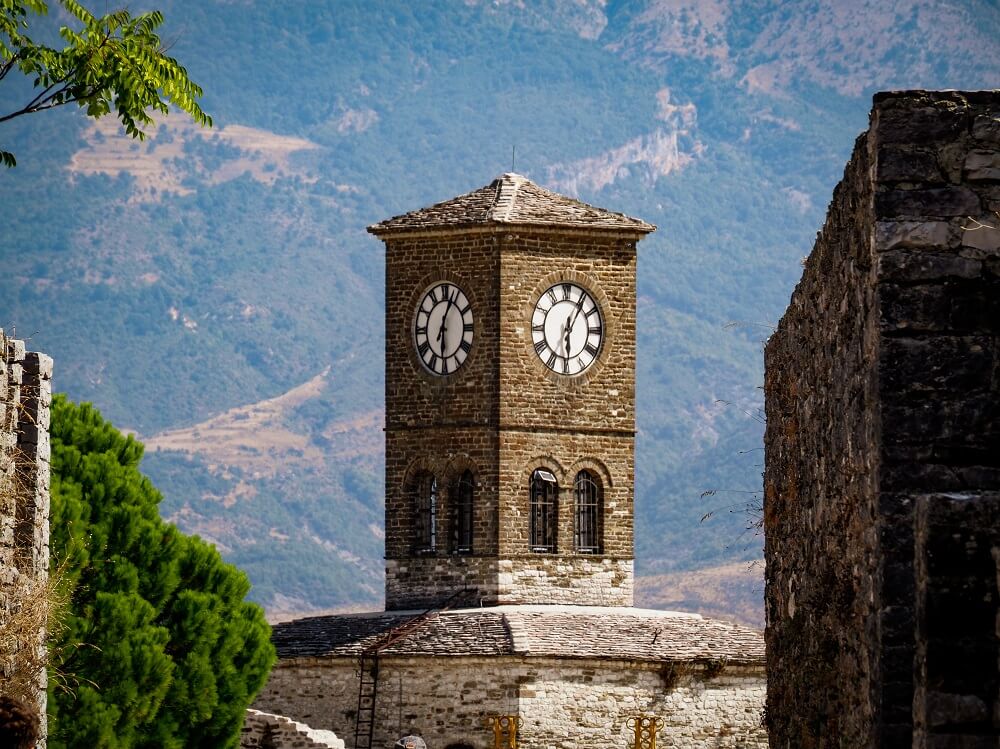

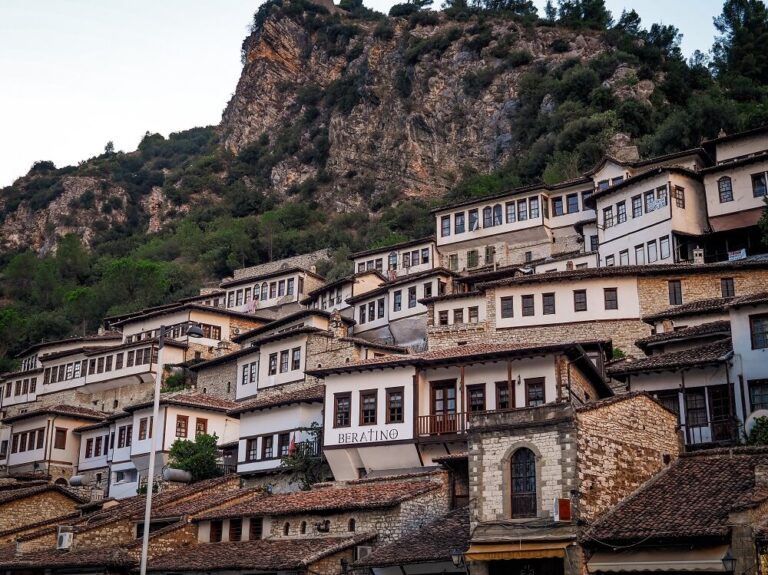
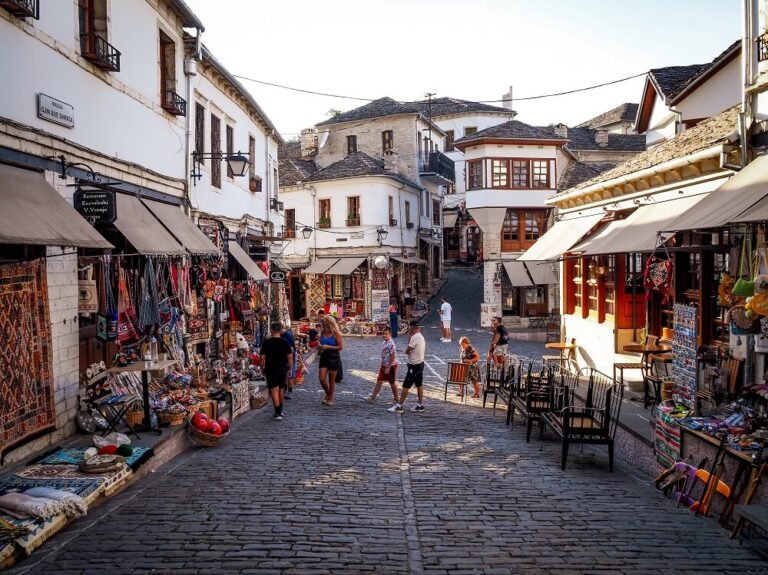
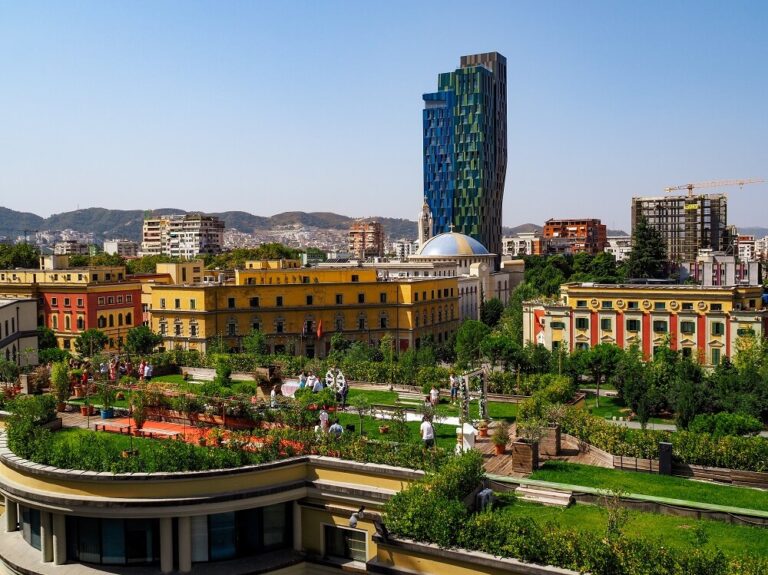
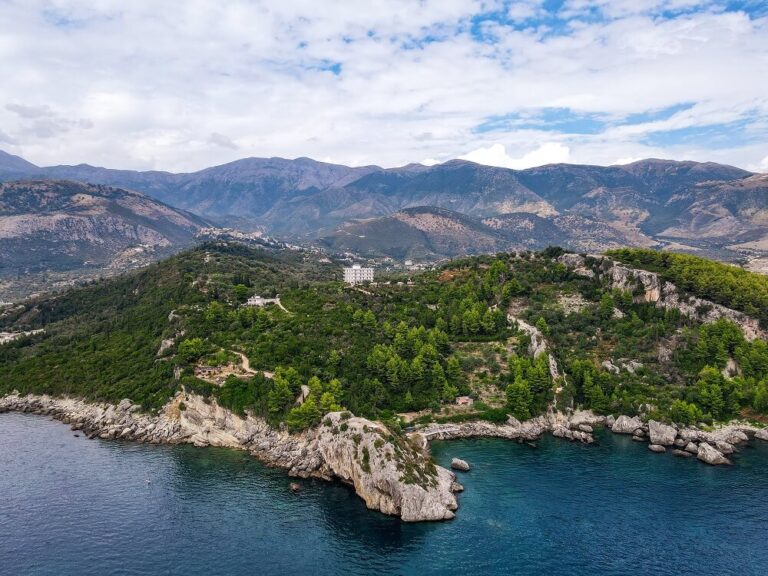
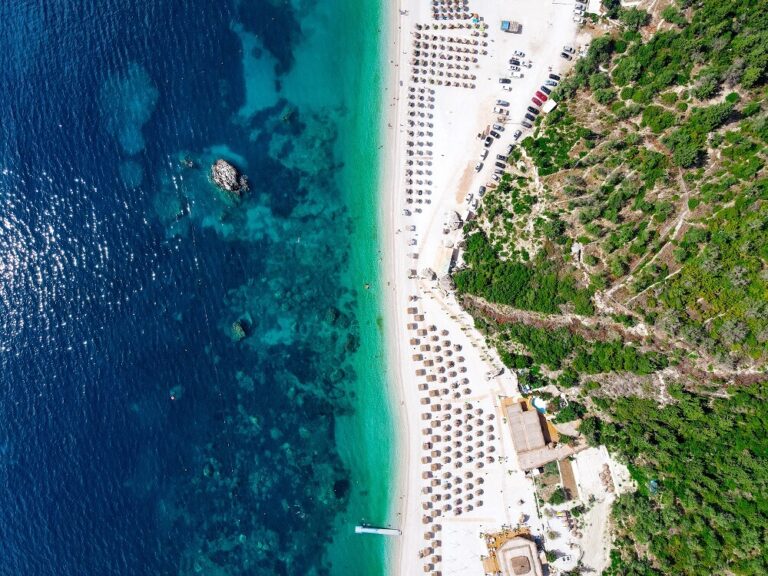
We missed Gjirokaster and just did Berat, but this city looks lovely! I love your photos! So beautiful!
We loved Berat too and I bet it was hard to decide which one to visit because they’re very similar but also very different. Hope you can return one day to Gjirokaster too.
Gjirokaster Albania looks to be a city rich with history! I would definitely love to check out that castle and the bazaar!
Thanks Alicia, we agree, Gjirokaster is a beautiful place to visit. Hope you can plan your trip soon.
This is such a complete guide. Thanks for putting together so many historical, cultural and active ideas of what to do in Gjirokaster!
Thank you Lindsey, we’re glad to hear that you found the post useful.
Thanks for sharing your adventures. I love posts such as this that teach me about places I had not heard of before.
Thanks Jolayne, we’re happy to hear that you enjoyed reading about Gjirokaster.
I’ll admit, Albania has never been on my list really – but that’s because I truly just didn’t know that much about it! It looks SO beautiful! Pinning for later inspiration.
Thanks Anna, we’re happy to hear that Albania is now on your radar. It’s such a beautiful country, so hopefully you can also visit in the near future.